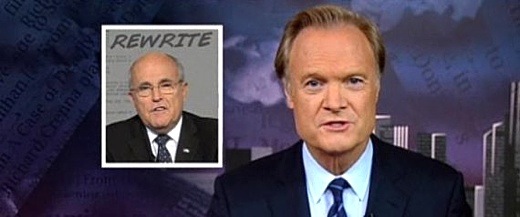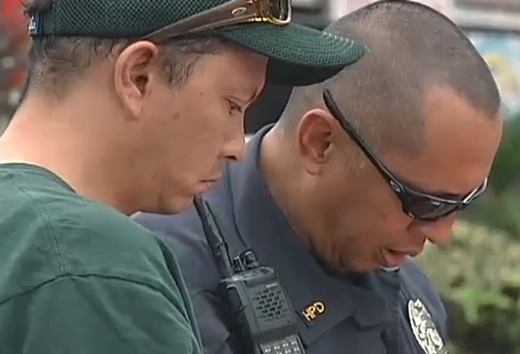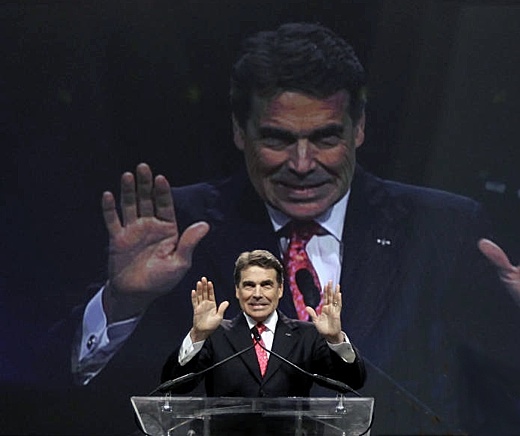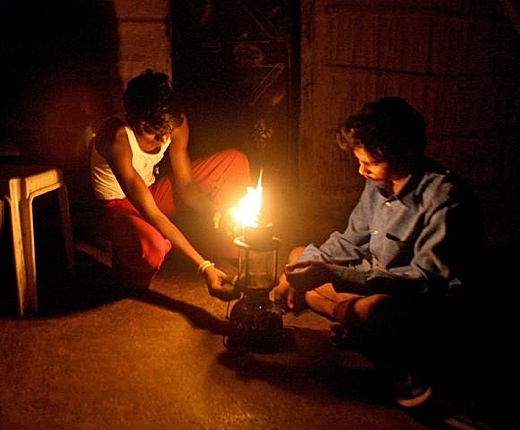By Sarah Anderson on 31 August 2011 for Institute for Policy Studies -
(http://www.ips-dc.org/reports/executive_excess_2011_the_massive_ceo_rewards_for_tax_dodging)

Image above: Negative 15.8% Tax Rate not low enough for General Electric. It asks for amnesty. From (http://www.ctj.org/taxjusticedigest/archive/2011/07/negative_158_tax_rate_not_low.php).
Guns don't kill people, the old saw goes. People do.
By the same token, corporations don't dodge taxes. People do. The people who run corporations. And these people — America's CEOs — are reaping awesomely lavish rewards for the tax dodging they have their corporations do.
In fact, corporate tax dodging has gone so out of control that 25 major U.S. corporations last year paid their chief executives more than they paid Uncle Sam in federal income taxes.
This year's Institute for Policy Studies Executive Excess report, our 18th annual, explores the intersection between CEO pay and aggressive corporate tax dodging.
We researched the 100 U.S. corporations that shelled out the most last year in CEO compensation. At 25 of these corporate giants, we found, the bill for chief executive compensation actually ran higher than the company's entire federal corporate income tax bill.
Corporate outlays for CEO compensation — despite the lingering Great Recession — are rising. Employment levels have barely rebounded from their recessionary lows. Top executive pay levels, by contrast, have rebounded nearly all the way back from their pre-recession levels.
This contrast shows up starkly in the 2010 ratio between average worker and average CEO compensation. In 2009, we calculate, major corporate CEOs took home 263 times the pay of America's average workers. Last year, this gap leaped to 325-to-1.
Among the nation's top firms, the S&P 500, CEO pay last year averaged $10,762,304, up 27.8 percent over 2009. Average worker pay in 2010? That finished up at $33,121, up just 3.3 percent over the year before.
What are America's CEOs doing to deserve their latest bountiful rewards? We have no evidence that CEOs are fashioning, with their executive leadership, more effective and efficient enterprises. On the other hand, ample evidence suggests that CEOs and their corporations are expending considerably more energy on avoiding taxes than perhaps ever before — at a time when the federal government desperately needs more revenue to maintain basic services for the American people. This disinvestment also undermines the infrastructure and services that small and large businesses also depend upon.
Investigative journalists and tax research organizations have been documenting how U.S.-based global companies are aggressively shearing — and even totally eliminating — their federal income tax obligations. This past March, for instance, The New York Times traced the steps General Electric has taken to avoid U.S. corporate taxes for the last five years. Citizens for Tax Justice, as part of a forthcoming study on tax avoidance among the Fortune 500, has identified 12 corporations that have paid an effective rate of negative 1.5 percent on $171 billion in profits.
How do corporations avoid taxes?
In our analysis of companies that last year paid their CEOs more than Uncle Sam, the companies' low tax bills — or large refunds — could not be explained by low profit rates. A large majority of the 25 companies on our list reported high profits in 2010. The low IRS bills these companies faced reflected tax avoidance pure and simple.
Our 25 hyperactive tax-dodging corporations employed a variety of avoidance techniques. Not all of these techniques are nefarious. Some corporate tax breaks can have redeeming social value. Incentives that encourage our economic transition to a green energy economy offer one example of these beneficial breaks. But such incentives as these play only a minor role. The lion's share of tax breaks reward corporate behaviors — from "offshoring" to accelerated depreciation — that are of questionable value to society, especially over the long term.
Ironically, and tellingly, corporations can even lower their tax bills by overcompensating their executives. The higher CEO paychecks soar, the more corporations can deduct off their taxes.
No tax-dodging strategy over recent years has filled U.S. corporate coffers more rapidly than the offshoring of corporate activity to tax havens in low- or no-tax jurisdictions. Eighteen of the 25 firms highlighted in this study operate subsidiaries in offshore tax haven jurisdictions. The firms, all combined, had 556 tax haven subsidiaries last year.
Tax havens are costing the federal treasury, by one estimate, $100 billion a year. These havens are speeding the transfer of wealth out of local communities and the global south into the bank accounts of the planet's wealthiest and most powerful. Tax havens, or more accurately "secrecy jurisdictions," can also facilitate criminal activity, from drug money laundering to the financing of terrorist networks.
How do tax havens work? One common corporate accounting technique, "transfer pricing," helps corporations shift profits offshore. Technology and drug companies regularly open shell companies — in tax havens — that hold their intellectual property rights. They then charge their U.S.-based operations inflated amounts for the use of these rights. These inflated costs get deducted off U.S. taxes. The overseas tax haven profits go un- or lightly taxed. Adding insult to injury, a coalition of corporate tax dodgers is now asking Congress to reward their tax avoidance with a deeply discounted five percent tax rate if they bring these funds back home where many of them started.
This offshore tax gaming has spawned a massive global tax avoidance industry, with teams of lawyers and accountants who add nothing to market efficiency or product development. This "shadow" banking industry played a key role in the 2008 financial crisis. The "shadow" system's reckless financial maneuvering operated through layers of opaque offshore tax havens. The two biggest bank recipients of U.S. taxpayer bailouts — Citigroup and Bank of America — both just happen to be tax haven-happy. Citigroup operates 427 subsidiaries in tax havens, the Bank of America 115.
Accounting games like "transfer pricing" have sent the corporate share of federal revenues plummeting. In 1945, U.S. corporate income taxes added up to 35 percent of all federal government revenue. This year, corporate income taxes will make up just 9 percent of federal receipts. In 1952, the year Republican President Dwight Eisenhower was elected, the effective income tax rate for corporations was 52.8 percent. Last year it was just 10.5 percent.
Proposals to rein in tax dodging and excessive pay
Tax-dodging corporations argue they are breaking no laws. They are just, the argument goes, operating "under the rules that Congress has established." They are indeed. But massive corporate outlays for lobbying and campaign contributions shape those rules. The 25 firms highlighted in this study spent a combined total of more than $150 million on lobbying and campaign contributions last year.
All the companies highlighted in this report benefit enormously from their institutional presence in the United States. They utilize our taxpayer-funded infrastructure for transportation. They tap into government-sponsored research and subsidies for technological innovation. They expect the U.S. law enforcement and judicial systems to protect their intellectual and physical property. And they rely on the U.S. military to defend their assets abroad.
U.S. corporations also benefit from the public education of their workforces. In fact, 16 of the 25 CEOs included in this study received at least a portion of their post-secondary education in taxpayer-supported public universities. Yet these same corporations remain content to let others pay the bills.
We have, in short, a corporate tax system today that works for top executives — and no one else.
In this year's edition of our Executive Pay Reform Scorecard, we highlight the many efforts underway to change the rules that are contributing to executive pay excess. These include efforts to rigorously implement the executive pay provisions in the Dodd-Frank financial reform law, as well as more far-reaching proposals that would use tax and procurement policies to discourage runaway pay.
Read the full report, Executive Excess 2011: The Massive CEO Rewards for Tax Dodging.
Take Action!
Sign a petition to Congress demanding the passage of the Stop Corporate Tax Haven Abuse Act.
.












